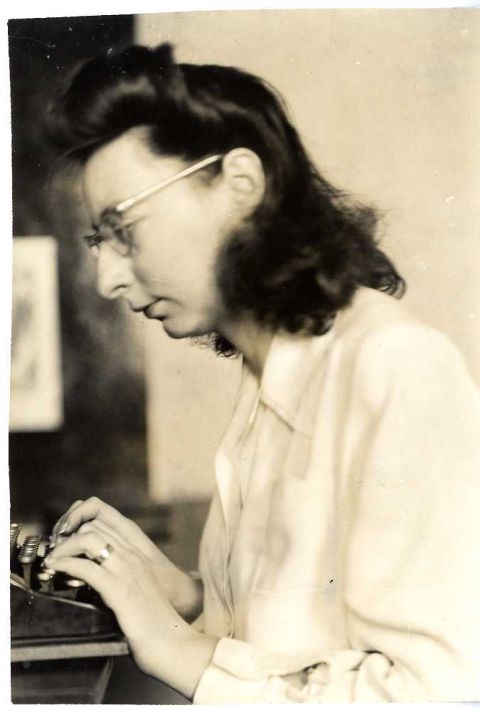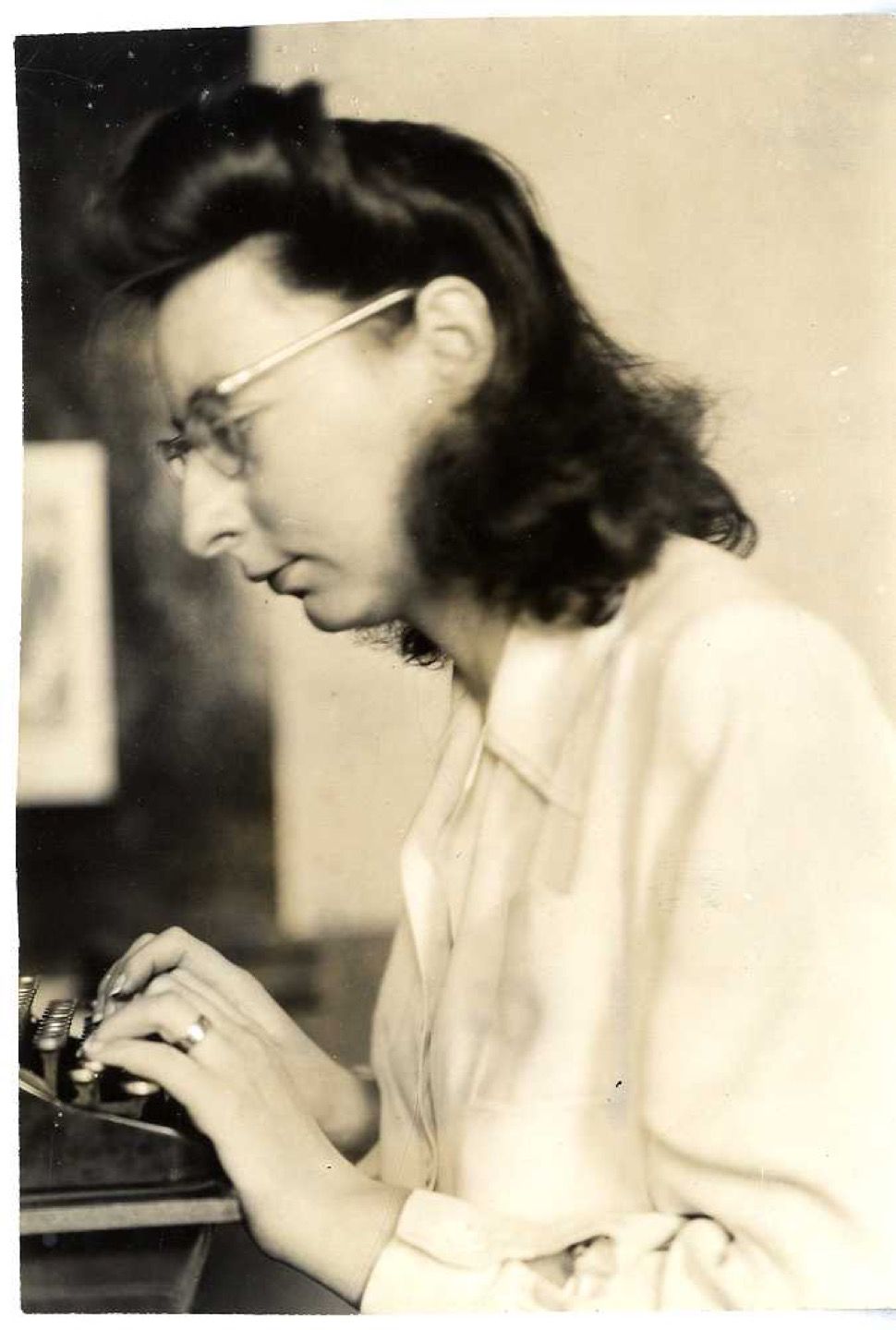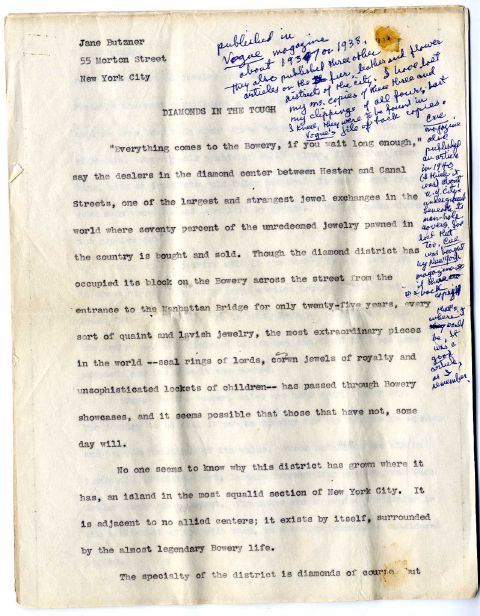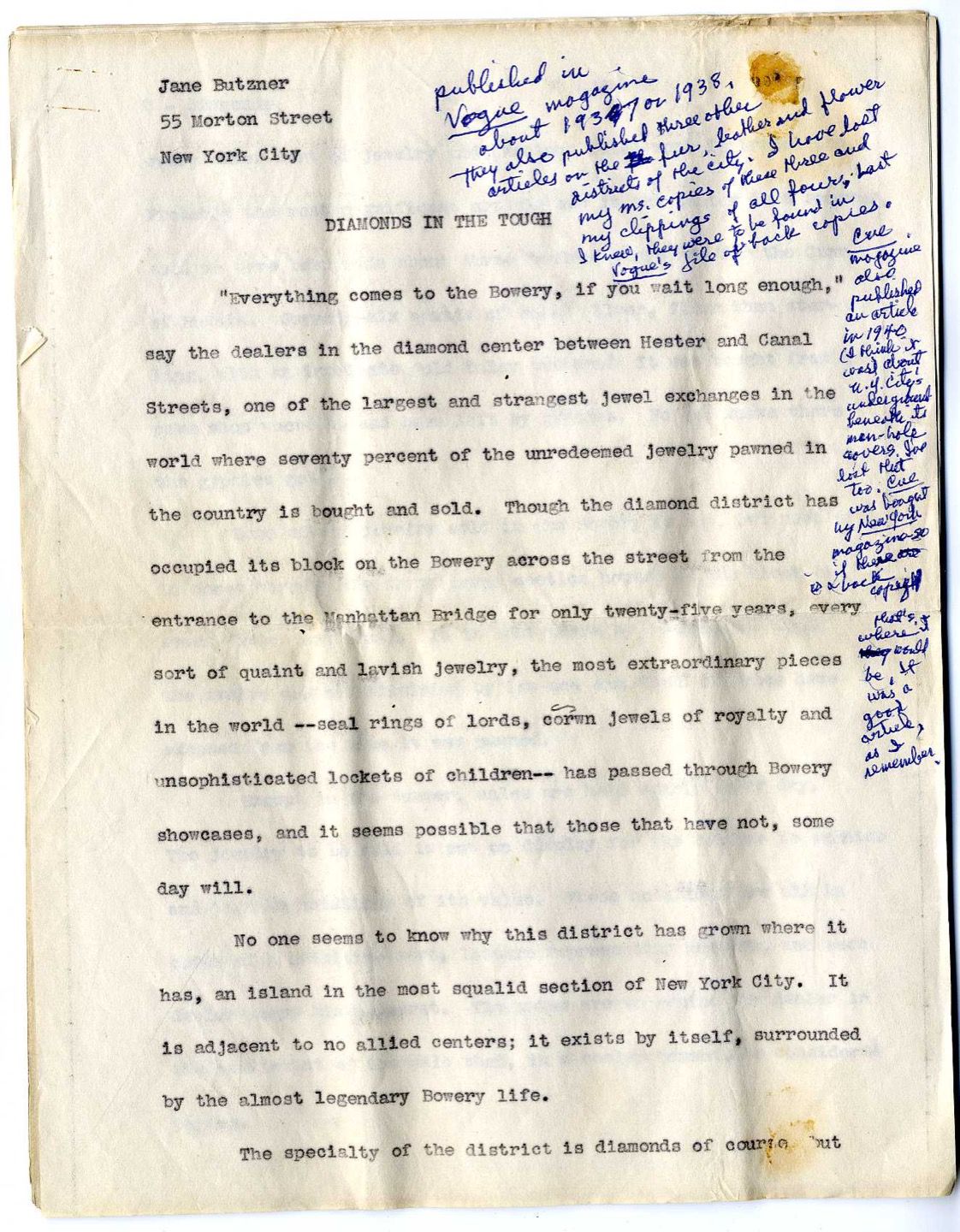Journalist
Jacobs wrote a number of articles for industrial and architectural trade journals, many of them unsigned, before she undertook the groundbreaking study of city planning and urban life that brought her lasting fame and influence, The Death and Life of Great American Cities, published in 1961.
It may be surprising that such an acclaimed writer never completed a college degree. For as much as she loved to learn, the young Jane Butzner resisted becoming a model student. To the contrary, she challenged the authority of her teachers, got poor marks, and once got herself expelled. After graduation, she remained in her hometown of Scranton for a year to get her bearings, working as an unpaid assistant for the local newspaper.
She then moved to New York City, got an apartment in the West Village, and found work as a stenographer and freelance writer. She took a variety of courses through Columbia University’s extension school, but was denied admission to Barnard College. “I was therefore allowed to continue getting an education,” the inquisitive yet dissentious learner later commented.
Between 1935 and 1937, Jacobs wrote a series of four articles for Vogue magazine on the fur, leather, diamond, and flower districts of New York City. At a peak of her popularity in the late 1960s, she was to be the subject of an article in Vogue. It never appeared.
She took a job as a writer for Iron Age magazine and later Amerika, a publication of the U.S. State Department. She met her husband, Robert Jacobs; they married in 1944. They bought a house in the Village and started a family, raising two sons and a daughter. When Amerika relocated to Washington, D.C. in 1952, she found a better-paying position as a journalist for Architectural Forum.
Writing for Architectural Forum exposed Jacobs to contemporary urban planning and politics, and made her suspicious of their purported benefits. In 1956, her editor asked her to give an address at Harvard University in his stead. She spoke about the urban renewal “projects” in East Harlem, and urged her audience to “respect—in the deepest sense—strips of chaos that have a weird wisdom of their own not yet encompassed in our concept of urban order.” To her surprise, her criticisms were received with interest, even enthusiasm.
Jacobs was commissioned to write a piece for Fortune magazine titled “Downtown is for People.” It caught the attention of the Rockefeller Foundation, which awarded her a grant to research and write the study that would become Death and Life. The autodidact had earned her bona fides, if not a degree. She would later turn down more than 30 offers of honorary degrees, regarding them as false credentials.




